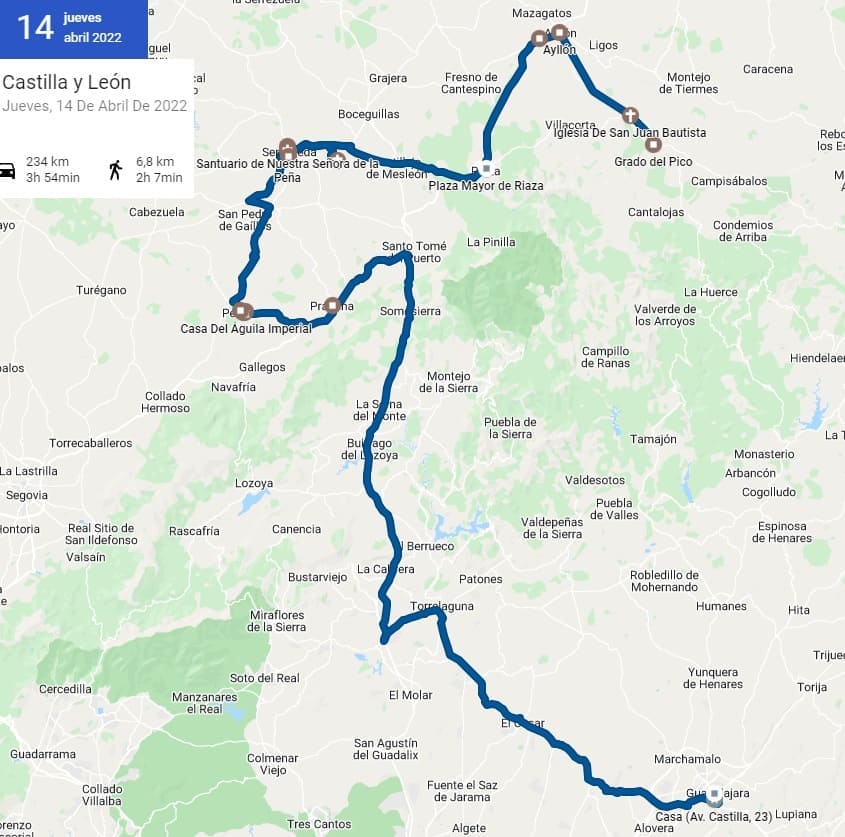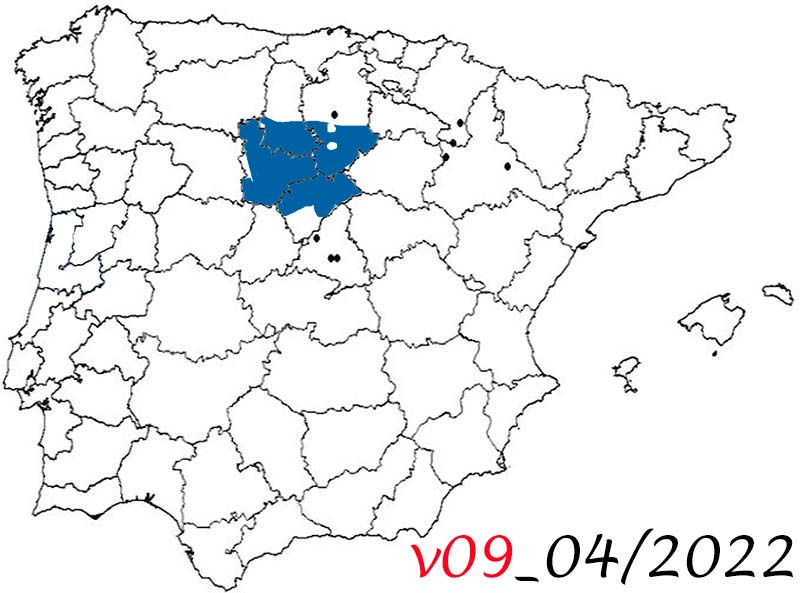
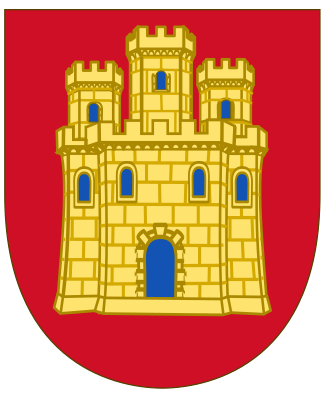

9. Trip to Castilla The Old
9. Trip to Castilla The Old
April 8 to April 14, 2022
Day 6, from Palencia to Segovia via Burgos
April 13, 2022
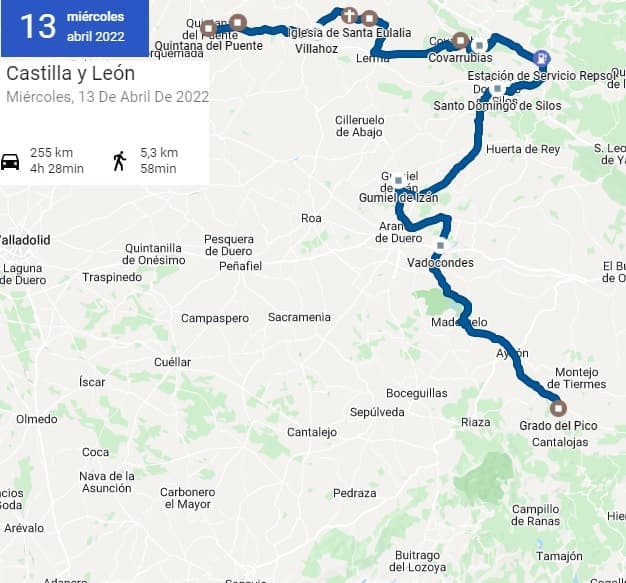


180. Quintana del Puente
180. Quintana del Puente
Quintana del Puente where I stayed, is a very quiet town near the highway that connects Valladolid with Burgos. It has a medieval bridge and a Romanesque church. It also has numerous hiking trails as there is a lot of nature around.
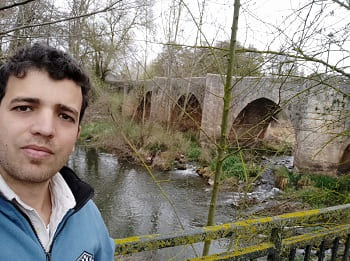

181. Palenzuela
181. Palenzuela
Nearby is the town of
Palenzuela. This town is located in the old town of Pallentia that resisted the Romans. In times of the Middle Ages, with the reconquest, it would be of great importance due to its proximity to the Arlanza River and having a defensive position as it is on a mountain. A Romanesque hermitage would be built on the outskirts that exists today: the hermitage of the Virgin of Allende del Río. Very close is the bridge and the entrance arch to the town. At the bottom of the town are the ruins of the castle that can be seen in one of the following images.
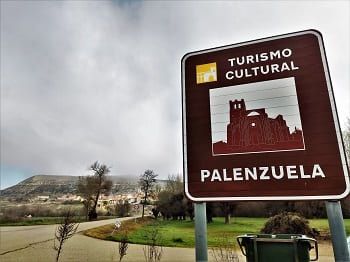
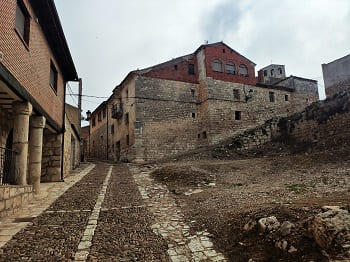
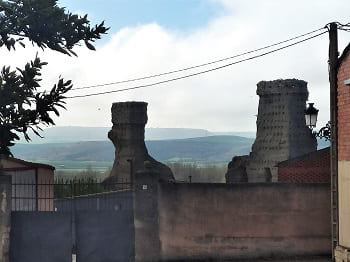
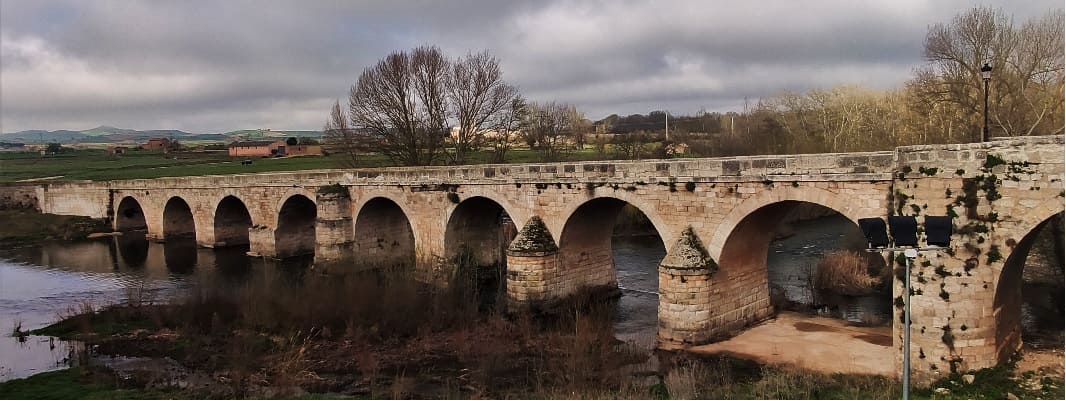
Within the city we have a couple of Gothic churches of great importance, that of Santa Eulalia of which today only part of the outer walls remain, and that of San Juan Bautista that houses the altarpiece of the other church.
In the following images the entrance to the church, its door and the detail of the noble shields carved under the decorative columns of the door.
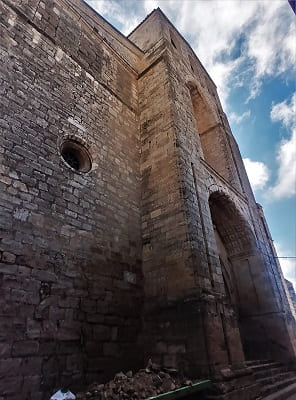
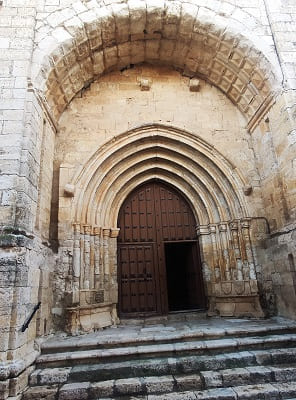
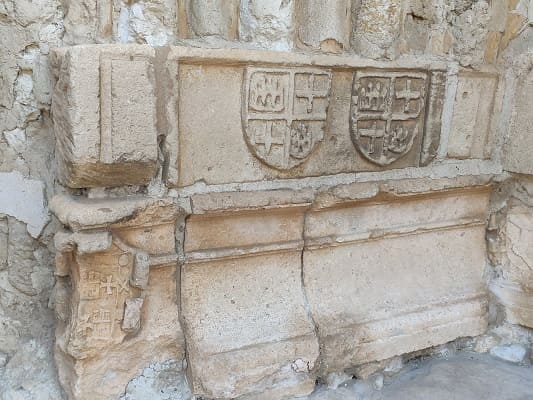
This
church of San Juan Bautista is one of the most beautiful in all of Palencia, with a chapel with different tombs of nobles from the city as well as other tombs on the other sides of the nave with all kinds of details gothic. It has a very old altarpiece in the chapel with different paintings, and another wooden one from the other church that has been recently restored. We also found a very old baptismal font and remains of carved stone with different carvings that belonged to the sacristy and they are still thinking about what they are going to do with them since the sacristy is being restored. In it is the medieval tomb of a nobleman who could have royal offspring due to the shape of the tomb.
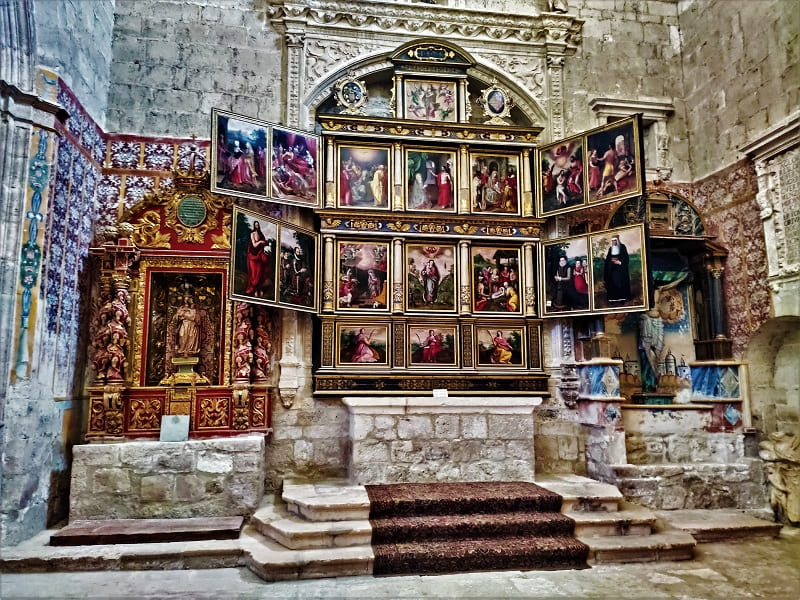
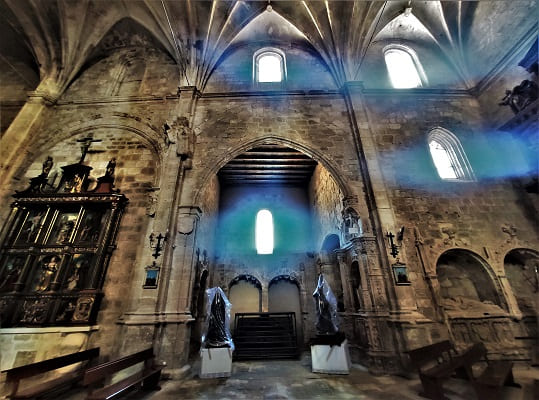
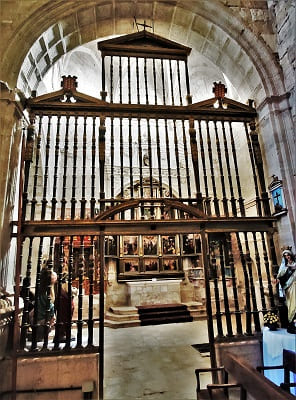
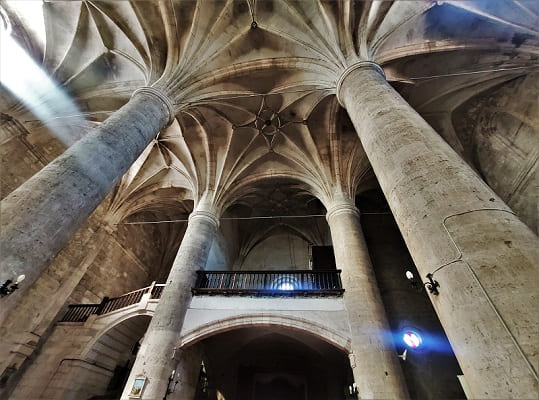

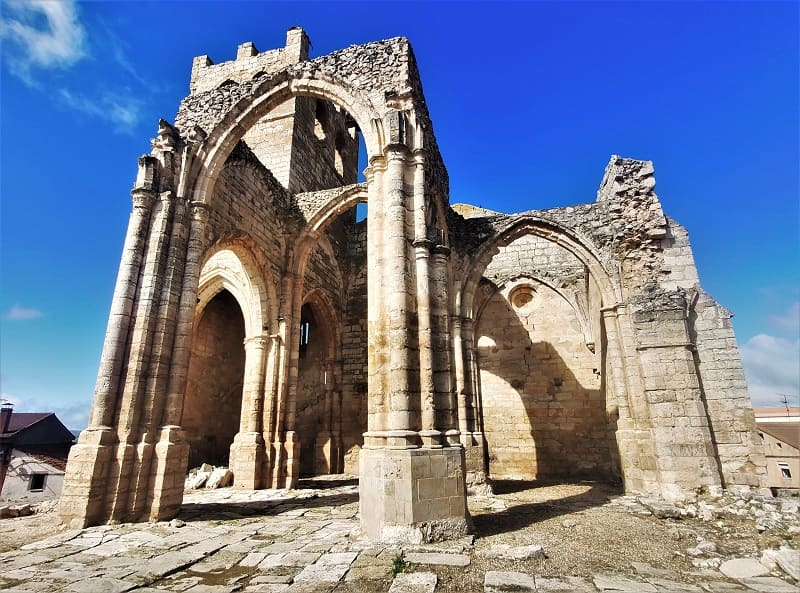
Then I would visit what remains of the old
church of Santa Eulalia, seen in the previous image.


182. Villahoz
182. Villahoz
The next point to visit would be the Cistercian monastery of Santa María la Real. On the way, I would stop at
Villahoz to see its Gothic church. On the outside it has a door with a carved stone arch and inside a ceiling with Gothic arches and Renaissance and Baroque altarpieces.
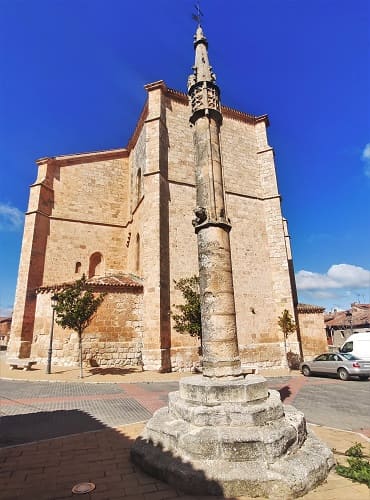
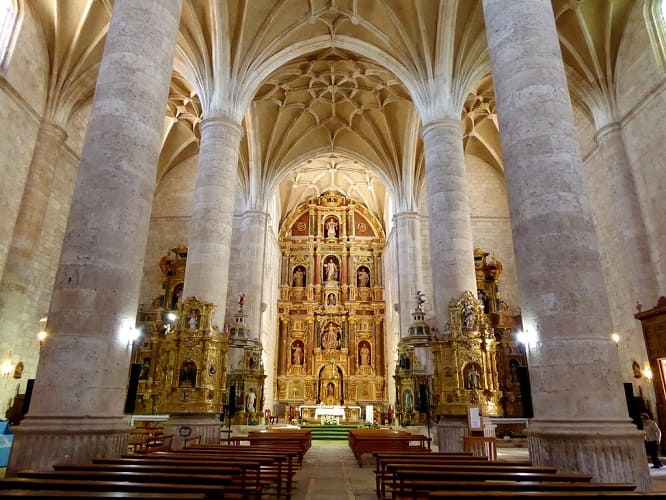

183. Zael
183. Zael
Continuing would be
Zael, another town with a well-kept Romanesque church that has recently had exterior lighting.
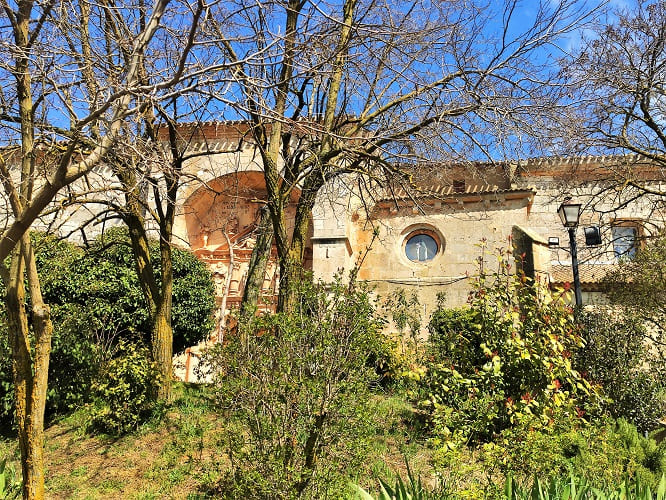
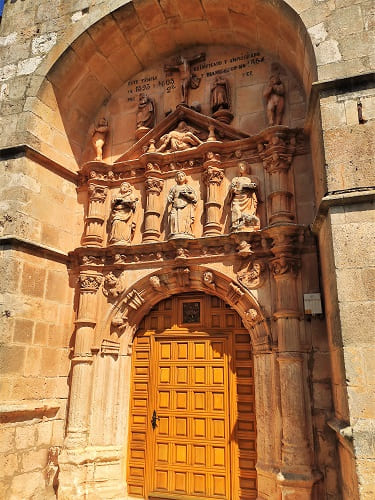

184. Villamayor de los Montes
184. Villamayor de los Montes
And without further ado you would reach
Villamayor de Montes, where the monastery of Santa María la Real is located. This monastery is inhabited by nuns, who act as guides. The monastery church is usually open and the highlight apart from the façade is the Romanesque-style cloister of the monastery. It is a very sober style with double columns as in other monasteries in the area such as Silos, although the chapels are only vegetal without any great detail. This is also due to the Cistercian way of life, without luxuries.
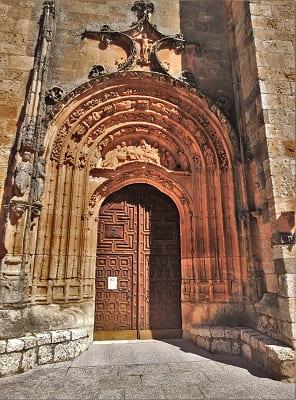
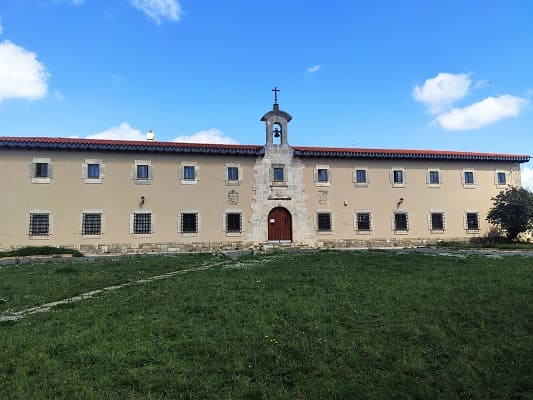
Once you have seen the monastery, you would take a walk through the town that has nothing remarkable. Even the village church cannot be compared to the village churches seen above.


185. Covarrubias
185. Covarrubias
The next town would be Covarrubias. This town is in the ranking of the most beautiful towns in Spain. Apart from its heritage, walking through its streets is very pleasant. It is a village with a medieval character in which almost all its houses have kept their old appearance until today. It reminds me a lot of many German towns that I visited last year made of old materials such as wood and adobe with the only difference that in Germany the roofs are more sloping and here they are flatter. The yellow color stands out in houses and restaurants. To enter the old town we must pass an arch that is over the building of the
Archivo del Adelantamiento de Castilla, crowned by the shield of Felipe II, which would be the times when it would have its most splendor. Although, its importance goes through times of the reconquest where several of the nobles who resided were adding importance due to their proximity to the kings.
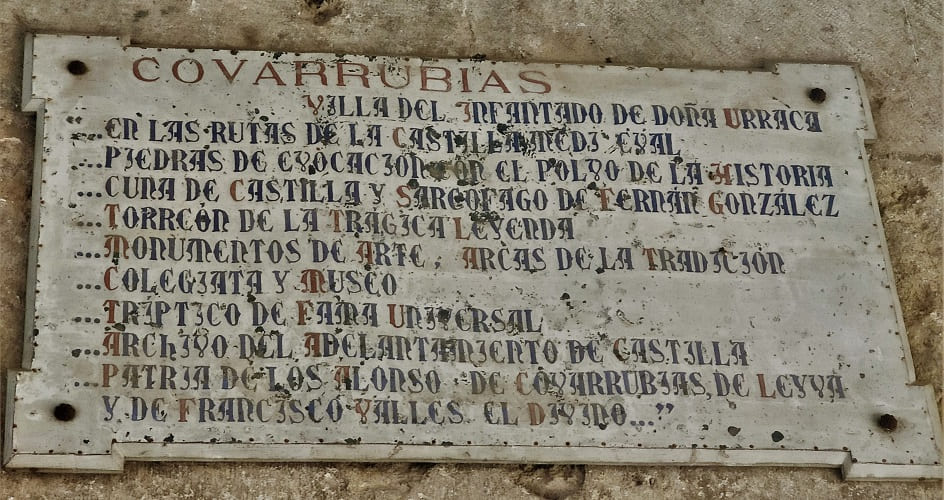
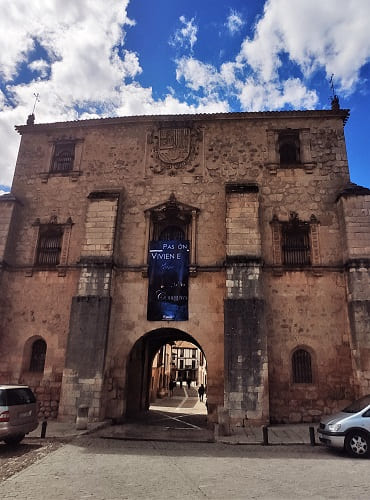
In fact, a monastery would be built near this town, which I will present later, which would be one of the most important on the peninsula. Let us remember that Burgos was the capital for centuries until Toledo was reconquered and that little by little the latter would gain importance.
The jewel of the town is the collegiate church of San Cosme and San Damian. The interior of the collegiate church is impeccable with a Gothic-style nave and a multitude of details of this style in the tombs of the nobles who rest there. The cloister can be visited and is done in a guided way, but you have to pay. The cloister was built in the early 16th century, and in it is the Gothic tomb of the Infanta Cristina of Norway, the first wife of the Infante Felipe of Castile and Suabia, son of Ferdinand III and brother of Alfonso X the Wise. It also has a sacred art museum where different pieces are presented, such as Romanesque capitals, Berruguete tables, goldsmithing from the master of Calahorra and liturgical clothing from the 16th to 18th centuries.
Apart from the collegiate church, the most notable part of the town is the main square,
the Fernández González tower, where today there is a museum of medieval siege machinery.
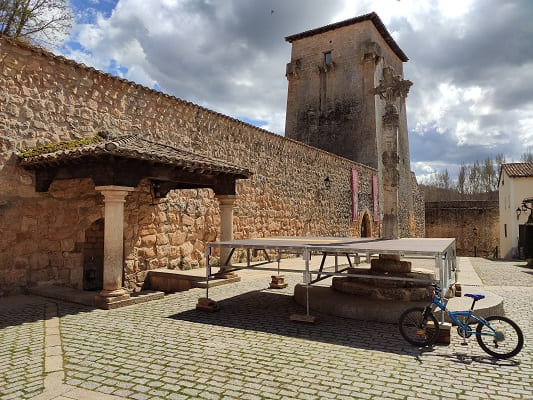
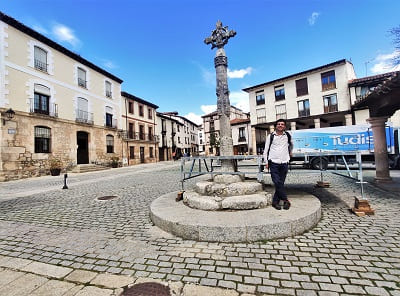
The jewel of the town is the collegiate church of San Cosme and San Damian. The interior of the collegiate church is impeccable with a Gothic-style nave and a multitude of details of this style in the tombs of the nobles who rest there. The cloister can be visited and is done in a guided way, but you have to pay.
The church of the town is that of Santo Tomás. It is Gothic in style like the collegiate church, although it has undergone many reconstructions. The last one is the one with the tower that burned down 100 years ago and that today is made of brick.
7 km from Covarrubias is the
Monastery of Arlanza, a jewel from the 13th to the 16th century. It is located in the town of
Hortigüela.

186. Hortigüela
186. Hortigüela
7 km from Covarrubias is the
Monastery of Arlanza, a jewel from the 13th to the 16th century. This monastery 1 century ago was completely in ruins and thanks to the intervention of the state and the Junta de Castilla y León it has been enabled to be visited without any risk. The monastery was very important after the birth of Castilla, which came to house a large community of more than 100 monks inside. The proportions of the monastery are large, larger even than the Silos monastery that he would later visit. Nothing remains of the church except the apse and the plan of the columns, which were enormous, indicating the magnificence of the place. There are also some details of interior capitals. The tower and the exterior façade are perfectly preserved but restoration has been required. Remember that because it is open to the outside without any wall or protection, it had a fortress structure. Not much more was needed since access to this place is difficult because it is delimited by mountains and the river and to enter it was necessary to come either from Covarrubias or from Salas de los Infantes. The jewels of the monastery were the entrance portico that to protect it was taken to the National Archaeological Museum or the tomb of Mudarra that was taken to the Burgos Cathedral and today can be seen in the cloister of the cathedral. Mythological pictorial images were also torn off and taken to different museums around the world. Most are in the United States. This is all due to the abandonment that occurred by the clergy already in the 17th century in favor of other monasteries and later to the confiscation of Mendizabal, which would deal the final blow. After this time, being very little protected, the goods would be looted and damaged.
However, today, after the great remodeling work, you can walk inside and imagine how it was centuries ago, although more panels and engravings of what the different rooms were like would be needed. In addition, this area became famous for different movies that were shot in the area. The most famous film would be the Good, the Bad and the Ugly, starring Clint Eastwood in 1966, in which the scene in which they fight in an abandoned canteen would be in this monastery and the final shot of the 3-way duel would be shot in an area to the south of the monastery, in which they would recreate an abandoned cemetery in the western desert.


187. Salas de los Infantes
187. Salas de los Infantes
To get to the Silos Monastery from Arlanza Monastery, you would pass through
Salas de los Infantes, an ancient town that perfectly preserves its architecture and ancient history. The most noteworthy are its two Gothic-style churches,
the church of Santa María la Mayor and that of Santa Cecilia and the Plaza Mayor of which the town hall and the adjacent building remain. Nearby is
a theme park dedicated to dinosaurs that has made this town appear on the map of towns to visit.
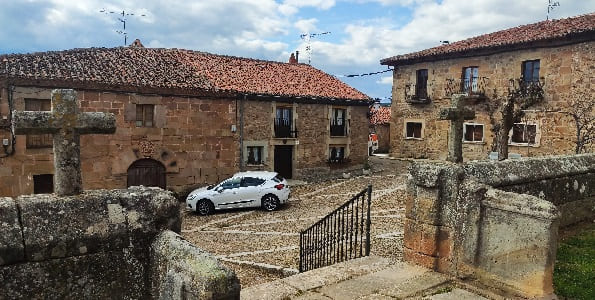

188. Santo Domingo de Silos
188. Santo Domingo de Silos
Continuing the trip, you would arrive at
Santo Domingo de Silos, a town famous for the location of the monastery that is one of the most important in Spanish geography. The church of the monastery does not have much to tell apart from its large dimensions since it is stripped of altarpieces and paintings, counting only on the cross. The main square of the town where the town hall and some hotels and restaurants are located maintains a homogeneity around the architecture of the monastery.
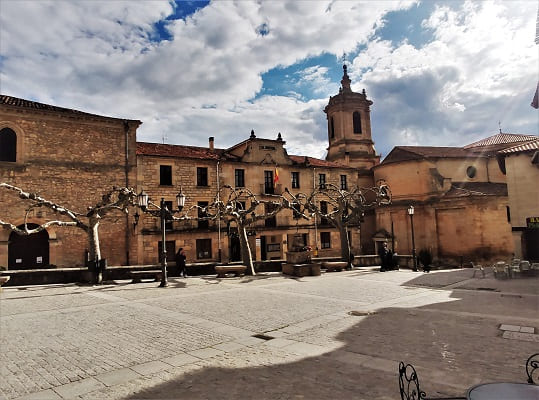
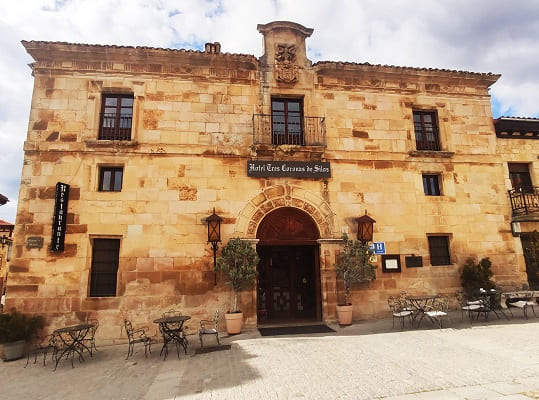
This monastery can boast of having the most well-cared, best-preserved and best-decorated Romanesque cloister in stone of all. The plan of the cloister is quite large with double pillared columns. Some of them with crooked or coiled columns that may be an innovation of the Romanesque of that time. Also in the corners they have different images of the life of Christ. The polychrome coffered ceiling is incredible with images of lions and heraldic shields or with simply scenes from the countryside or agriculture. The day I went, his visit was free because it was Holy Thursday. I was also able to access the museum of the monastery where the monstrances are, a cross with gems, parts of altarpieces, polychrome carvings, paintings and some important elements from its time.
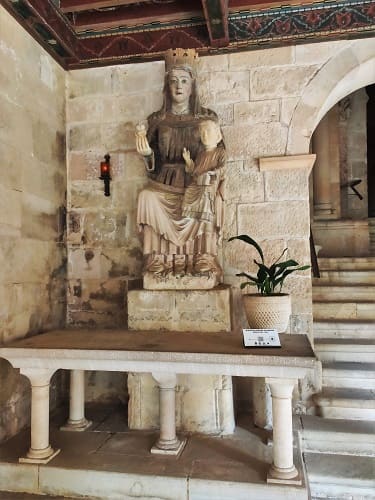
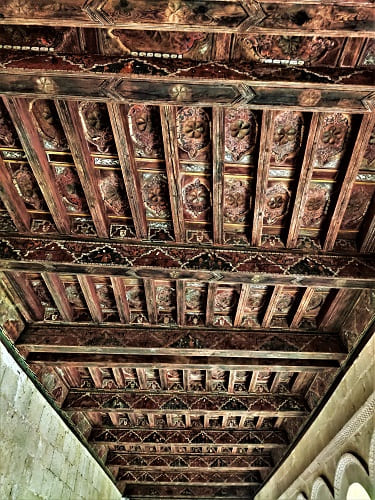
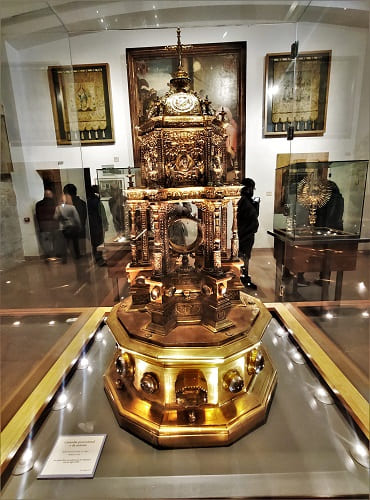
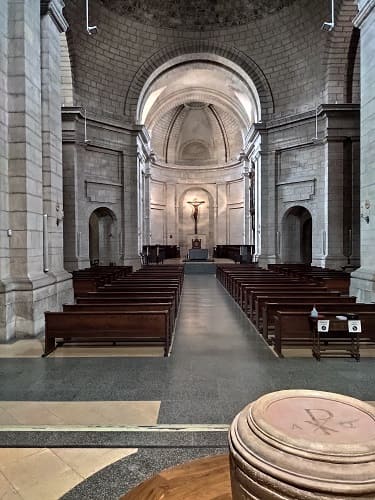
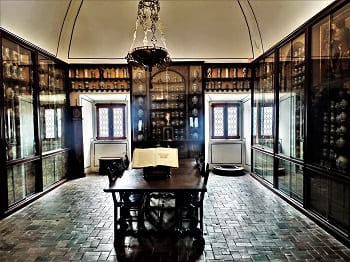
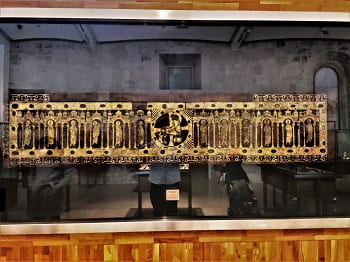
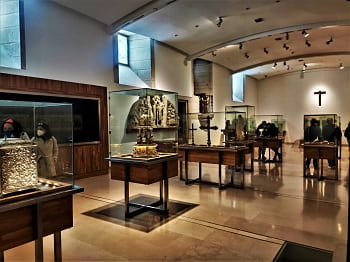
After Santo Domingo he would go to a town in Segovia where he would sleep. Go through Caleruega but don't stop. It is a town that is well worth a visit, being in the ranking of the most beautiful towns in Spain.
Due to how late it was getting I would go to two more very close towns.
190. Gumiel de Izán
190. Gumiel de Izán
The first,
Gumiel de Izán, very close to Aranda de Duero, which has a
church, Santa María, in the Gothic style that could well be a cathedral. In it, the altarpiece of the main altar stands out, late Gothic, from the beginning of the 16th century, which narrates in sculptural groups different scenes from the life of Jesus as well as the Virgin Mary. The carvings dedicated to the Virgin occupy the central street of the altarpiece: birth, ascension and coronation. The altarpiece is finished off with a calvary. It has a huge nave, which contains an altarpiece more typical of a cathedral than of a church, with different carvings of the life of Jesus in several holes. In addition, the temple has a reliquary, and chapels.
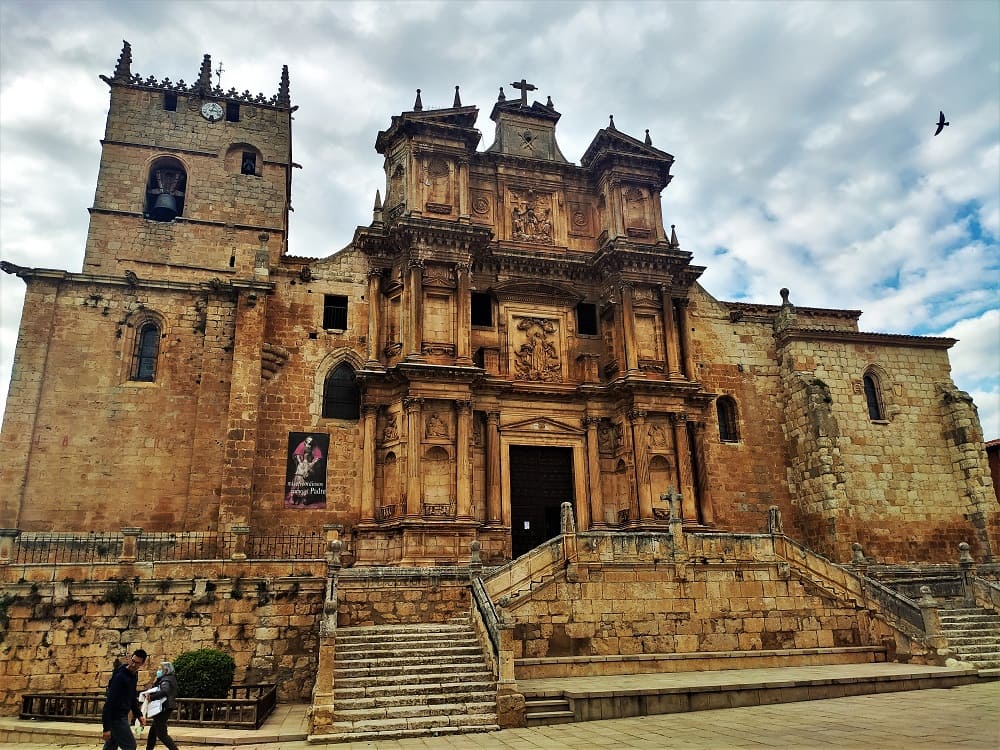
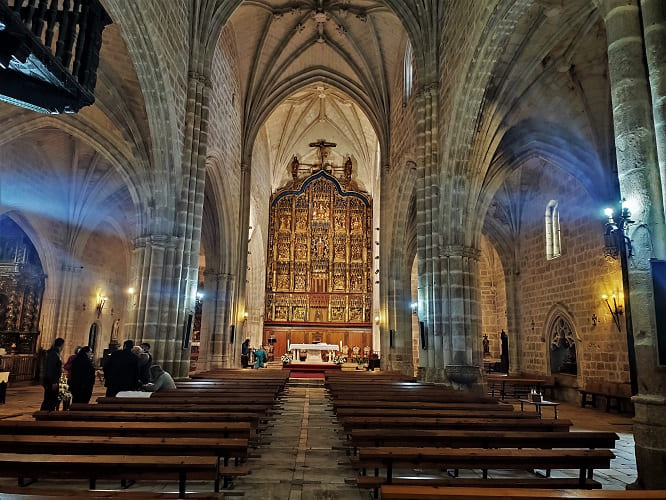
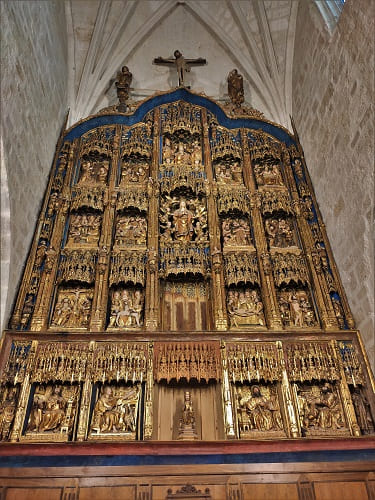


191. Vadocondes
191. Vadocondes
The other town,
Vadocondes, whose
Church of the Assumption, not as sumptuous as the one in Gumiel, has several details that make it unique. Like the stone spiral staircase in one piece.
The processional carriage from the 15th century or some Romanesque carvings discovered not long ago inside its walls, which highlight the importance of the church more than 5 centuries ago.
Outside it has a very beautiful
Gothic-style Jurisdictional Scroll and in front
the house of the inquisition whose façade is still preserved. This town would be important after converting the town to a Villa under the mandate of Isabel La Católica. This is why the shield on the
gate or arch of the town which at that time had the natural protection of the limits of the Duero river and a great wall.
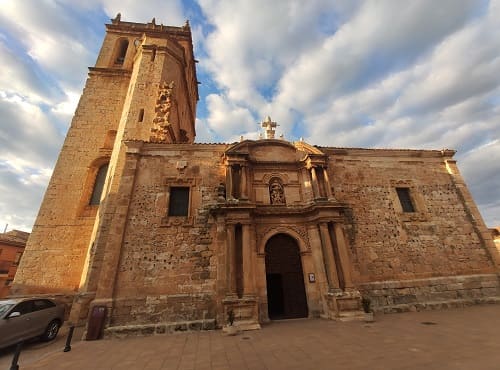
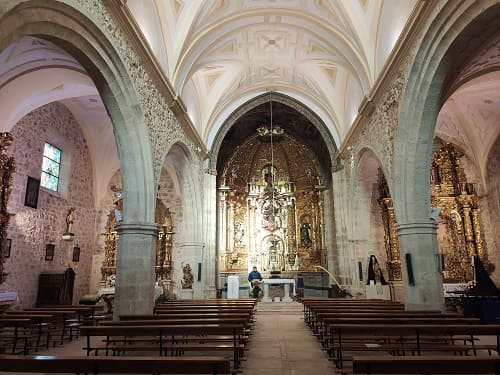
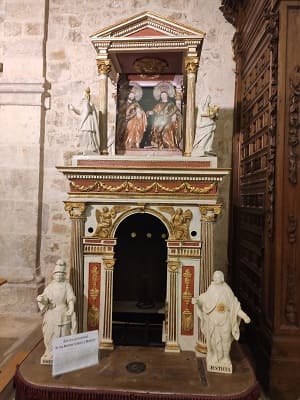
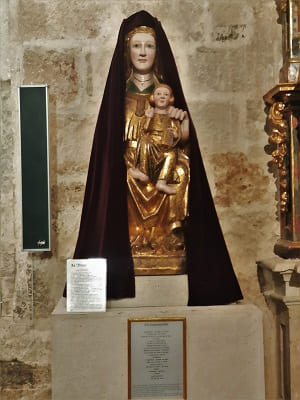
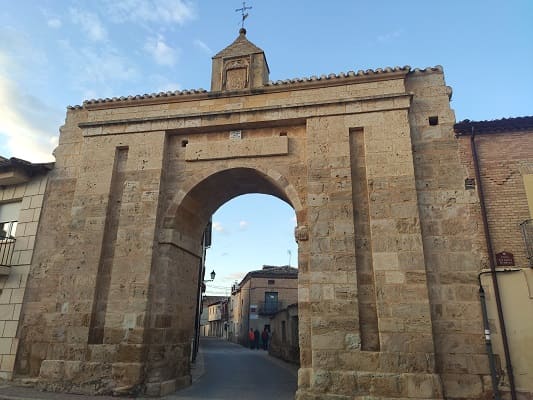
Finally, he would pass through Ayllon, which he would visit the next day and arrive at Grado de Pico, a town that borders Soria, Guadalajara and Segovia at the top of the mountains.
10 s.X bridge over the Arlanzón river.
27
Church of Saint John the Baptist s.XIV.
28
Church of Our Lady of the Assumption s.XVI.
29
Monastery of Santa Maria la Real, s.XI.
31
Main square and Collegiate Church of San Cosme and San Damián.
32
Monastery of San Pedro de Arlanza s.X.
33
Main square and Church of Santa María s.XV.
34
Santo Domingo Monastery s.XII.
35
St. Mary's Church s.XVI.
36
Church of Our Lady of the Assumption and Jurisdictional Roll.
37
Day 7, visit important towns in the east of Segovia and arrival in Guadalajara (CLICK to continue)
April 14, 2022
